Воинственный клич римского солдата мог оглушить обычного человека в трех метрах от него. Рокот сражений за Великий Рим был слышен во всех государствах мира. О древних воинах Средиземноморья ходят легенды и по сей день. Совсем недолго осталось до того момента, когда все мы сможем лично поучаствовать в событиях становления Римской Империи в игре Total War: Rome 2. Студия разработчиков Creative Assembly воссоздала еще более масштабный мир — от севера Британии и до южных краев Эфиопии, от западного побережья Испании и до старинной Бактрии, со 112 фракциями, владеющими 182 регионами в более чем 70 огромных провинциях. Как и прежде, нам предстоит управлять одним из народов и вести его к процветанию. Только теперь сделать это будет гораздо сложнее. Наш зарубежный коллега Дэниел Грилопулос (Daniel Griliopoulos) отправился в офис «Творческой Ассамблеи» и рассмотрел грядущий хит со всех сторон, притронулся к рабочей версии и обстоятельно пообщался с авторами. По итогам его приключений мы адаптировали для вас всю информацию в обширное превью, но для самых отважных в заключении статьи предлагаем к ознакомлению оригинальный текст от Дэна, включающий развёрнутое интервью.
Собственная великая империя
Завоеватели издревле славились своим стремлением к бесконечной экспансии. Многие жестокие правители уничтожали целые народы, устрашая своих врагов. Бесконечные войны за новые земли и богатства происходили с завидной регулярностью большую часть истории человечества. Одним из ярчайших ее периодов была воинственная Римская Империя. В Total War: Rome 2 широко представлен этап формирования величайшего государства мира на протяжении 300 ходов. Впрочем, мы вольны переписать историю на свой лад и сделать еще более величественной империей одну из 9 доступных игрокам фракций: Карфаген, Рим, Египет, Парфию, Свевы, Арверны, Ицены, Понт или Македонию. Тем, кто оформит предварительный заказ, разработчики обещают дополнительно Эпир, Спарту и Афины.
Избрав путь глобальной экспансии с имперскими амбициями, мы столкнемся с серьезными проблемами на пути к своей цели. Благодаря тщательно переработанной дипломатии и новой экономико-политической системе, построенной на региональном делении провинций, игровые фракции могут мгновенно ополчиться на угрожающего их независимости правителя. Усталость от войны проявляется теперь не только сухим параметром в описании регионов, но и в качестве причины ослабевания армий.
Ролевая система в Total War: Rome 2 — одно из главных улучшений игры. Прежде чем набрать армию, нам понадобится найти человека, что ее поведет. Генерал обладает 10 этапами роста, как и армия. Каждый уровень развития позволяет выбрать одну из 10 «традиций» для легиона, улучшающих его наступательные, оборонительные, осадные или походные характеристики. Потеря закаленного в боях генерала теперь имеет еще большее значение, чем раньше. Зато полностью уничтоженную армию можно восстановить с прежними традициями. Кроме того, легионы обзавелись знаменами и именами с возможностью их редактирования игроком.
Появились в игре и политические персонажи, принадлежащие фракциям. Наиболее активные подданные империи будут противостоять вашим планам или, наоборот, помогать. С помощью «политических очков» таких персонажей можно убивать, провоцировать на нужные шаги, подкупать или выражать им поддержку. Как правило, это известные исторические личности; Creative Assembly заверяет, что мы вольны сделать своей подданной даже саму Клеопатру. Дипломатия и политическая система позволяют творить собственную историю с учетом происходивших тогда событий, в которых проявляли себя те или иные подданные фракций.
Каждый игровой персонаж обладает особыми характеристиками: амбицией, авторитетом, возрастом, чином, властью, хитростью, рвением. Их могут сопровождать вспомогательные личности (анчи, аналог свиты) — врачи, священники, ветераны и так далее. Развитие генералов и других персонажей происходит с набором их опыта в результате успешных или провальных действий. Все как раньше. Но разработчики привнесли несколько свежих идей в эту схему, включая «прокачку» легионов и генералов в отдельности.
Средства ведения войны
Традиционно сильная армия в Total War: Rome 2 играет самую важную роль. Большое государство должно уметь защищать свои границы. Наверняка многие из вас уже видели, как происходят смешанные бои в официальных видеороликах Creative Assembly: с моря высаживаются воины, затем они сражаются с врагом в открытом поле и завершают схватку осадой замка. Каждое столкновение с противником теперь требует тщательной подготовки. На 300 ходов разработчики обещают нам всего 200—300 сражений, и они нам запомнятся.
Принцип набора воинов в легионы заключается в постепенном формировании войска, а не найме его разом. В домашних провинциях мы сможем собрать костяк легиона, характеристики которого будут зависеть от изученных технологий в округе и расположенных поблизости уникальных построек. Затем в других провинциях мы сможем не только восполнять потери, но и нанимать других уникальных «юнитов» либо вовсе изменять состав легиона.
В походах на вражеские земли, находясь среди воинственно настроенных поселений, мы столкнемся с отсутствием возможности восполнять потери в своих легионах. Однако местные наемники зачастую предлагают свои недешевые услуги — огромные боевые слоны или диковинные устрашающие воины готовы сражаться на нашей стороне за нескромное вознаграждение. Следует отметить, что в Total War: Rome 2 подобная роскошь доступна лишь очень богатым правителям, потому наемники, скорее всего, окажутся последней надеждой терпящего поражения генерала.
Total War: Rome 2 использует новую систему передвижения войск по карте кампании. В приоритете защиты армия получит бонусы к обороне при смене хода, а также возможность тактического размещения «юнитов» перед битвой. Марш-бросок увеличит дальность перемещения армии на карте, но сделает ее уязвимой для вражеских засад, а повторное применение такой тактики приведет к истощению воинов. Никуда не денется режим засады в выгодных ландшафтных позициях. К нему добавится лишь рейдерство — в этом положении армия живет за счет земли, разоряя люд на торговых путях и близлежащие города. Рейды можно устраивать не только в чужих землях, но учтите, что на своих территориях мародеры сильно понижают привлекательность провинции.
Глобальная тактика
В Total War: Rome 2 общее число армий ограничено значением «империум» — рейтингом вашей фракции. По мере расширения империи это число будет расти вместе с вашими возможностями. Отправляя свой легион на битву, вам придется продумать все тонкости предстоящего сражения. Например, городской бой и столкновение на окраине поселка значительно отличаются по тем преимуществам, что получает игрок. Если занять населенный пункт раньше врага, то в нашем распоряжении могут оказаться городские укрепления. На окраине их будет меньше, и есть вероятность, что противник займет возвышенность или лесной массив.
Сражения в открытом поле, битвы за переправу через реку, значительно измененные засады, атака на армию в марш-броске, смешанные бои с высадкой десанта с кораблей, осады замков — каждое из столкновений привязано к огромному количеству локаций. Creative Assembly не лукавила, когда рассказывала нам о запоминающихся сражениях в Total War: Rome 2. Помимо впечатляющих сухопутных битв также обещаны зрелищные поединки в открытом море, осады фортов, различные комбинации высадки десанта на морском и речном побережьях. Всего более 30 «водных» локаций, включая корабельные засады (пока точно неизвестно, как они будут реализованы).
Каждая из известнейших столиц: Рим, Александрия, Афины и другие — обладает не только уникальным внешним видом, но и нестандартными защитными сооружениями. Это нужно учитывать перед тем, как вторгнуться в эти владения. Всего в Total War: Rome 2 представлено более 30 типов городов, являющихся центрами отдельных, самостоятельно развивающихся регионов. Чтобы завладеть провинцией, необходимо завоевать все регионы, входящие в ее состав, включая столичный округ с главным городом.
Мирное строительство империи
В данный момент мирные аспекты игры находятся еще в стадии доработки. Обещана новая система дипломатии и экономики. Поскольку армии теперь устают от войны, а большие границы надежно охранять со всех сторон практически невозможно, в нашем арсенале появятся новые способы борьбы за превосходство на стратегической карте.
Мирное существование в Total War: Rome 2 возможно от начала и до самого конца. Многое зависит от того, какую тактику вы предпочтете. Воинственный игрок может идти по головам своих врагов, разрушая громадные стены и сжигая корабли. Но эффективнее всего использовать хитрость — если прервать поставки товаров или захватить ключевые регионы, то можно сломить боевой дух соперника, а затем с помощью новой системы дипломатии выторговать себе необходимые условия или вовсе заставить бывшего врага уйти под наши знамена.
Еще одно нововведение касается развития городов. В Total War: Rome 2 население наконец обрело свое истинное и самое важное значение — чем больше жителей в городе, тем больше возможностей появится для различных построек. Некоторые здания требуют определенное число граждан, которые смогут их обслуживать. И если в одном городе наблюдается избыток людей, а в другом — недостаток, то население можно перенаправить для исправления ситуации.
В Creative Assembly утверждают, что данный параметр городов сейчас оттачивается. Скорее всего, в релизной версии игры население во многом будет зависеть от культурных различий провинций, их удаленности от столицы и так далее. Это особенно пригодится в тех ситуациях, когда отдаленный регион нуждается в людях для производства сырья, необходимого для процветания ремесленных поселений. Шахты, порты и мельницы теперь не просто отдельно стоящие постройки на глобальной карте — они представляют собой города в центре самостоятельных регионов с собственными строениями и веткой развития.
Специализация регионов позволяет развивать их в конкретном направлении. Например, если округ занимается фермерством, возведение ферм в области приведет к значительному росту урожая. Таким образом, на глобальной карте мы видим, как сырье, продукция и товары стекаются со всех концов провинции в ее столицу, развивая дорожную сеть. Региональное фермерство может стать еще эффективнее, если в столице построить рынок зерна. Он даст дополнительные бонусы и принесет доход от сельскохозяйственной деятельности провинции.
В Total War ранее никогда не были представлены столь подробные производственные цепочки. В Rome 2 их сразу несколько — сельское хозяйство, производство товаров, культура, торговля. Подобная моноструктура провинции, разумеется, является ее главной уязвимостью перед врагами — если кто-нибудь успешно завоюет столичный округ, в остальных регионах наступит кризис, а затем начнут исчезать дороги.
Политическая драма
Когда игрок получит под контроль всю провинцию, в его арсенале появятся «эдикты» (или указы). С их помощью можно изменять величину налогов, провоцировать рост населения, осуществлять культурные мероприятия и так далее. Число эдиктов ограничено и зависит от упомянутого выше рейтинга фракции — империума. Некоторые эдикты доступны всем народам, некоторые — только определенным культурам. Например, у римлян есть возможность «романизировать» провинции, что дает бонусы к найму войск в таком месте. В провинции единовременно может действовать только один эдикт.
Такой инструмент пригодится для выполнения условий победы. В Total War: Rome 2 каждая из доступных игроку фракций обладает собственным набором исторических требований к экономике, военной мощи и культурным особенностям. Вы вольны выбрать одно из трех требований для победы в игре и изменить свой выбор в любой момент прохождения кампании. Creative Assembly уверяет, что эти условия нас не должны волновать так, как это было раньше. На исход кампании теперь влияют наши решения, победы или поражения в боях, результаты внутренних и внешних конфликтов. В конце концов, из-за необдуманных решений мы просто можем ополчить против себя весь мир.
Все игровые фракции имеют монархическую форму правления. Но Рим и Карфаген вольны менять республиканское правительство на имперское и обратно. Впрочем, Creative Assembly воссоздала те условия, при которых возникают даже гражданские войны, роняющие или поднимающие авторитет фракции. С не меньшей детальностью соблюдены и другие политические условия — например, для возникновения конфедераций братских племен. Варварские фракции в подобных коалициях представляют серьезную угрозу для соседей.
Игра престолов
В старой доброй Rome: Total War политические особенности ведения игры являли собой весьма примитивное зрелище, однако без них имперские интриги между тремя семьями просто невозможно себе вообразить. Total War: Rome 2 наделена богатыми возможностями внутриполитической игры. Если вы заинтересованы в семейных распрях, непременно обратите внимание на кампании за Рим и Карфаген, где авторы используют наиболее широкий набор опций консолидации власти и возникновения гигантской империи силами одной из трех семей.

Чтобы обеспечить себе власть над другими семьями, необходимо использовать политические очки. Они копятся каждый ход пошаговой кампании. Чем сильнее влияние семьи, тем больше ее политический капитал. Его можно потратить на уникальных персонажей, семейные интриги и многое другое.
Игра престолов во многом будет зависеть от случайных событий. Чем лучше сбалансировано ваше правление, тем меньше неожиданностей вас будет подстерегать на пути становления империи. Это касается любой играбельной фракции. Разработчики выстроили такую политическую систему, при которой отдельно взятое событие не может повлиять на исход игры, а вот их цепочка в некоторых случаях приводит даже к вымиранию целого народа. Сильная империя держит врагов в страхе, но и заставляет себя ненавидеть. Также слишком слабое государство с процветающими городами всегда будет привлекать воинственных захватчиков.
Располагая столь масштабным стратегическим запасом, Total War: Rome 2 не забывает и о важности применения агентов. Помимо огромного количества политических персонажей, агентурная сеть позволит игрокам добиваться еще более надежных позиций на дипломатической арене. В игре представлено три типа агентов: шпион, сановник, чемпион. Их также наделили «культурными оттенками» тех мест, где они появились впервые. Другими словами, это бонусы по аналогии со свитой персонажей из прежних игр серии. Каждый агент обладает доминирующим атрибутом и несколькими второстепенными.
Серия игр Total War выросла и стала великаном. Будучи претенденткой на звание идеальной глобальной стратегии, Rome 2 совсем скоро предложит нам окунуться в древнюю историю человечества. Это замечательный повод заинтересоваться периодом становления Римской Империи, насладиться видами тщательно воссозданных по чертежам и рисункам величественных городов и стать участником одной из самых грандиозных битв Средиземноморья. Новый графический движок Warscape+, огромная глобальная карта, годы труда профессионалов в лице Creative Assembly и простая человеческая любовь к истории — все это есть в одном из самых ожидаемых проектов 2013-го года — Total War: Rome 2.
This is our first view of the campaign map, which is at an early stage. This is a very good-looking strategic overview map, allowing you to see the whole world at once. It stretches from Bactria in the East (near modern Afghanistan) to Hibernia (modern Ireland) in the West, from Mauretania (North Africa) in the South to modern Scandinavia in the North. However, the map is much larger than the original Rome's, as it's been modelled in much greater detail.
Whereas, in the original, Italy itself was only a handful of provinces, here each province itself consists of a number of regions. To capture a province, you need to conquer each of these regions, and holding an entire province can give you extra powers to control it, such as ordering festivities and martial games to reduce its unhappiness, albeit at great expense.
The provinces themselves are also more detailed. Here, in Egypt, we can see a gaggle of camels roaming the desert, indicating that camel riders can be built here, as well as the mighty Pyramids near Memphis and the Pharos lighthouse in Alexandria, each of which give bonuses if your faction owns them. As cities increase in size, their walls expand and shanty-towns spring up outside them.
The music, sound effects and details shift as you travel around the campaign map, with the Northern lands having cooler winds and heavy-green forests, and the cities differing strongly. Out near Egypt, massive cities sprawl across the sands, stone-walled and civilised; up in Germania Superior, similar-sized cities like Lupfurdum (Dresden) are surrounded by wooden palisades, with a few scattered long-houses amongst the menhirs and woods. It’s all very beautiful and has obviously learnt much from the recent Civilization games.
The Roman faction, which we’re controlling, is itself split into three sub-factions, which you choose one of; the Julia, the Cornelia and the Junia. Managing these is a matter of making sure no faction ever gets too far ahead in terms of 'political capital'. On the faction management screen, you can see each faction, its members, and how much political capital it has.
You can also see the Imperial Subjects who are active in your regions at that time, and carry out actions against them using political capital. For example, our demonstrator was playing as the Julii (Julius Caesar's faction) and the very historical Marcus Tullius Cicero was causing problems for him. The four options available at the moment are to support a subject, extort money from him, discredit him or assassinate him. Our guide chose the latter and soon Cicero was struck down by unknown hands.
Caesar himself was heading up our military campaigns out in Egypt, leading the 13th legion personally. Sadly, his landing of a large army near Memphis (the ancient capital of Egypt) had led to the Egyptians cancelling their trade agreement with Rome, eating into our income substantially. Caesar attempted to deal diplomatically with the Egyptians but they were unwilling to come to terms — and the new diplomacy windows made it quite transparent that was because of the presence of his army on Egyptian soil — so he declared war.
It's worth noting at this stage that characters in Rome II are a lot more specific than they used to be, more like Crusader Kings characters. They each have several specific statistics, different characteristics that determine their usefulness to you in different ways — ambition, gravitas, age, rank, command, subterfuge and zeal. They also gain experience by leading armies out in the field as well as the familiar entourage of ancillary characters (doctors, priests, veterans, etc) and skills.
Similarly, armies also level up. The 13th, Caesar's own legion, at this time was level four of ten, which mean it has four 'traditions', upgrades that represent the specialised training and lessons the Legion had specialised in. The XIII, for example, has traditions that give its heavy infantry multiple offensive and defensive buffs, siegecraft bonuses, and better subsistence when campaigning abroad. You choose these traditions as the legion levels up.
These traditions are applicable in different ways to each faction's armies — not everyone will level up like the Romans. What's in common is that you can change each army's emblem and name. Even if the army is wiped out to a man, you can re-raise it at a nearby town. Recruitment has also changed to bring focus to legions, so players can recruit directly to an army as well as recruiting core units directly from home territories.
Like Medieval: Total War, armies can hire mercenaries as they travel around the map; these are super-expensive local troops that need to be paid every turn they remain in an army, so are used only in times of desperation. We can’t turn down the chance to hire some mercenary elephants though, as ten tonnes of bone and muscle trampling your enemies to jam is always a bonus. Then we attack an Egyptian army and navy fortified near the mouth of the Nile.
It’s worth noting here that armies can take different stances on the map, to change their behaviour. The regular stance, which we’re using, allows them to move around the map at a reasonable place and with a good military readiness. The forced march has them moving much faster, but being utterly vulnerable to ambushes and enemy assaults. The raiding stance is more interesting, giving the expense of maintaining large armies. In this stance, they live off the land, raiding trade routes and stealing money from nearby cities, and reducing their own upkeep. They can do this in enemy or friendly territories, though the latter will substantially reduce province happiness.
Anyway, Creative very kindly let us fight the battle Caesar has just started. The Battle of the Nile, fought between Caesar’s forces and those of the Egyptian Pharaoh Ptolemy XIII in 47BC, was a mixed land and sea affair, at least in Creative’s vision. Here players have to take control of either the small Roman veteran contingent as they assault the fortified hill or the larger unskilled Egyptian defenders.
As we said, this is the first time we’ve played a mixed-land and -sea battle, and it’s immediately familiar. Out in the Nile, the larger Egyptian fleet, equipped with catapults and ballistae, and led by a large flagship completely outguns the smaller Roman fleet, which is aiming to flank the land-based defenders and drop several legionary units on a beach behind the fort. Controlling the ships is just like controlling land units, mainly due to the ancient reliance on oars rather than sails so near to shore — there’s none of Empire’s or Shogun II’s tricky wind-based navigation here.
Supposedly, this fight is all in the Egyptian’s favour — they have a huge preponderance of force, as well as some nasty traps set for the Roman legions. They have a larger elephant contingent than the Romans, a handful of chariots ready to plough down the hill, giant flaming boulders to roll down the hill, as well as many archers, ballistae artillery and smelly camel-riders, famed for their ability to frighten horse-based cavalry. They’ve also got a large reinforcing army due to arrive, if they can hold off long enough.
Despite this I almost lose the battle the first time I play as Egypt. The Roman send their light cavalry to flank me on the hilltop; whilst my camel riders dealing with this and I’m sinking the Roman fleet with inspired ramming from my flagship, I’m distracted enough to not notice the main Roman army moving up the hill in Testudo formation. These tough veterans ignore my flaming boulders and close with my chariots before they can charge. Chariots, deployed by the Romans, Seleucids and Britons, are horribly lethal hit-and-run units if used properly, but can’t stand up to prolonged fights.
Similarly, my elephants are hit by the Roman javelin-throwers and immediately run amok, decimating the centre of my lines, allowing the Roman’s own elephants to cause havoc — elephants are the era’s most effective shock weapons, like tanks in World War II, but prone to running wild when attacked. Only after a long hand-to-hand battle do the Egyptian’s numbers pay off and the Roman army flees.
Playing as the smaller Roman army should be more of a challenge, but I immediately shift the odds in my favour by landing all the troops from my fleet. With three more units of legionaries pushing up the hill, I ignore the Egyptian fleet and aim straight for the enemy headquarters. I charge my elephants into the enemy’s own and aim my javelin throwers at them. They both stampede, luckily uphill into the Egyptian lines.
Meanwhile, my horsemen lure the camel-riders out of position, allowing the disciplined Roman troops to walk slowly up the hill under a hail of flaming boulders, artillery fire and arrows, and take the centre from the weak Egyptian troops. Even though my general, presumably Caesar, is killed in the first charge, the troops still push on and claim an easy victory. My fleet has been wiped out, but my army is totally victorious.
As expected, the game is easily the best-looking Total War game yet, with great detail in the battles, as the individual troops struggle and batter at each other, and the fleet combat is no different. Indeed, what’s surprising about the fleet combat is how effective it is — it feels like it’s always been part of the games, rather than a new addition.
Rome II is the largest world Creative Assembly has created and the company has changed the victory system to take account of that. Again following Civilization, players can win diplomatic or economic victories, alongside the military victories we’ve been used to. With these changes, the improved battle system and the famous Roman setting, we can’t see how they can fail to win a famous victory.
Interviewees: Janos Gaspar — campaign designer, Jamie Fergusson — lead battle designer, Al Bickham — communications manager.
How big is the campaign map?
Jamie: To the north of Britain and the southern tip of the Ethiopian peninsula…
Al: ...and from the Western tip of Spain, right over to Bactria, which is modern-day Afghanistan. It's really big. A lot of territory to conquer and a lot of factions as well.
Janos. 112 factions.
Jamie: Not all playable. If you preorder, you'll have 12 available at the start, with the bundled Greek factions pack that includes Athens, Sparta and Epirus. If you don't, it's 9.
Janos: In terms of Shogun II provinces, the average size in Rome is bigger, and we have 182 regions and 70-odd provinces.
Al: There were also 40 or so unit types in Shogun II, and we've got close to 700 in Rome II, including variants. So… it's really big.
Are subjects always famous named characters, like Cicero or Cato?
Janos: They can be named characters, but they can be everyday average people too. Anyone who lives within your border, basically, currently not under your control, is important because he has his own voice.
So when you conquer a new territory can famous people, like Cleopatra, become subjects too?
Janos: It can happen too. Subjects have their own conditions to appear.
Jamie: It depends on the conditions of the game at the time you play. The nature of TW is about creating your own history, a timeline that you can change and alter. Same thing with the unit types, the reason we have so many is because the player is able to make decisions that didn't necessarily happen in reality. So, for the example, the reforms that the way the Greeks fought their battles, changes the units that turn up on the battlefield, so that you don't just get stuck with pike phalanxes for the whole of the game. The whole world is constantly adapting and evolving. The Romans themselves didn't start out fighting in the way that people imagine they fight, the whole manipula formations. In the early periods, there was a lot of Greek-style hoplites and fighting, with lots of skirmishers and swordsmen as a sort of shielding force. Everyone's heard of the Marian reforms where you see a professional army developed, and there's no reason that couldn't have happened with all the other cultures. There's no reason the Romans had to undergo the reforms either. If you as a player decide to stick to the old ways right until the end, which would be a very Roman thing to do as they loved tradition.
How about the Seleucids (the inheritors of Alexander's empire) or the Egyptians? How did they reform in this period?
Jamie: There were very half-hearted attempts by the Seleucids to create their own legions before they got destroyed. They tried to Romanise, create their own legions.
Janos: For the Egyptians it was more like Hellenise, as initially they didn't let ordinary people into their armies — only the nobility and the Greeks were fighting. But after a couple of disastrous failures against the Seleucids, they started to import more Greek people, then started to adapt themselves to the whole hoplite army. Even the locals got armed and local forces were trained up to be hoplites.
We saw, during the peace negotiations, that the Egyptians were very happy about the war atrocities the Romans had committed against the Seleucids, the Egyptians ancient enemies. How much do prejudices like that appear and affect what you can do as a player?
Janos: Um… a lot! What happens is that, previously there were third-party factors if you did anything, but it was always against everyone else, not individual cultures. But here there's a big history log for each AI. Every single diplomatic or military action gets into that history log and they just analyze that depending on their feelings. They might particularly like you because you did something nasty to their enemies, which very nicely polarises the game, as people like each other tend to like each other more.
Jamie: It's part of that effort to create more human faces and characters, that feeling that there's a meaning to the diplomacy beyond mere financial and trade implications; that the enemy ofmy enemy is my friend.
Janos; Especially cultural differences and just generally resentfulness of the AIs is very important. If you're committing war crimes against the celts, the Greeks are like «ah, those are barbarians, we don't care». But if you are razing Greek cities every other Greek state will get angry.
How many battles on average will you fight?
Jamie: A battle for every single region, and battles to defend them, and sea battles..? To get to that point, you're probably looking at 200-300 battles. Depends on the strategy that the player uses; do you move around and cut off supply lines, or do you just plough straight through destroying everything? The player has the choice to autoresolve, of course.
Can you list the factions?
Jamie: Carthage, Rome, Egypt, Parthia, German Tribe, French Tribe, British Tribe, Three Greek Cities as DLC, Pontus, Macdeon.
How are you tackling the end game problem, where either you steamroller the world or the whole world is against you?
Jamie: Decisions you make on the campaign map, how you shape your kingdom or Empire, whether you go with monarchies or republics, create their own issues, internally and externally.
Janos: There's a whole internal struggle that, if you're not careful, can erupt in the mid- or late-game. As you're going out and doing things, thanks to the new diplomatic system, everyone will start to not just hate you but fear you, and naturally form alliances against you.
So there’s no more of Shogun II’s Realm Divide?
Jamie: Realm Divide isn't applicable because why would everyone make nice and just attack you? We're hoping that, through the diplomacy system, that's just going to happen naturally throughout the campaign, whilst you're having to deal with your own civil war, whilst your borders are expanding and alliances are forming, and you're having to really fight to keep control.
Janos: The same thing happens with confederations with the barbarians. If you're playing as a Barbarian, you have a chance of diplomatically conquering tribes from the same background or bloodline. If you're very friendly with them, you can just confederate with them and annex then without any battles. Another thing is that, if that culture gets an external enemy and starts to lose regions and battles, then naturally they will give up their independence and look more into confederating with other tribes from that culture, to avoid being annexed by someone else. If you are attacking the gauls (French) or Germans for example, they will merge together and fight back together.
Jamie: A lot of gameplay comes out of the history; so, for example, the victor of the Teutoburg forest, Arminius, ended up being betrayed by his own people; it wasn't the Romans that destroyed him, it was the Germans. We do that with this game; again, with the Romans, Julius Caesar was brought down by his own people. Even his rise to dictator wasn't certain, there were years where he spent most of his time fighting wars in order to not be called back and put on trial. All these elements these guys have put in creates a feeling of a living history that you're a key motivator for.
Do successful federations hold together easily? I'm aware that Arminius' German alliance hardly outlived the battle of the Teutoburg forest.
Jamie: It depends on the faction management. You can effectively stay together as a large new faction; but whenever there is unrest that leads to rebellion within those core German territories then the original tribes re-emerge as rebels, effectively, and you have an independent German faction that exists until it's conquered or re-confederates.
Janos: Not everyone immediately confederates with their ethnic groups. We had a couple of playthroughs where some of the Gallic tribes loved Rome more than the other Gauls so, when the others confederated, they invited the Romans in, as they'd rather be Roman. Something else that we're hoping will make the endgame more interesting is that the player has three different objectives to go for. You can change these on the fly; you might find yourself militarily at an impasse, but doing very well with your research, so you might go for a cultural or economic victory at that point. And that's it not based on a timeline. You have more to achieve which means every turns decisions are important decisions.

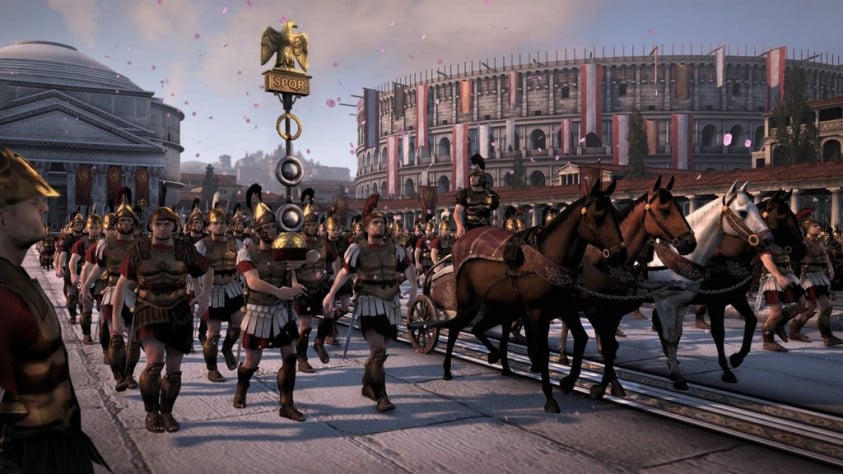
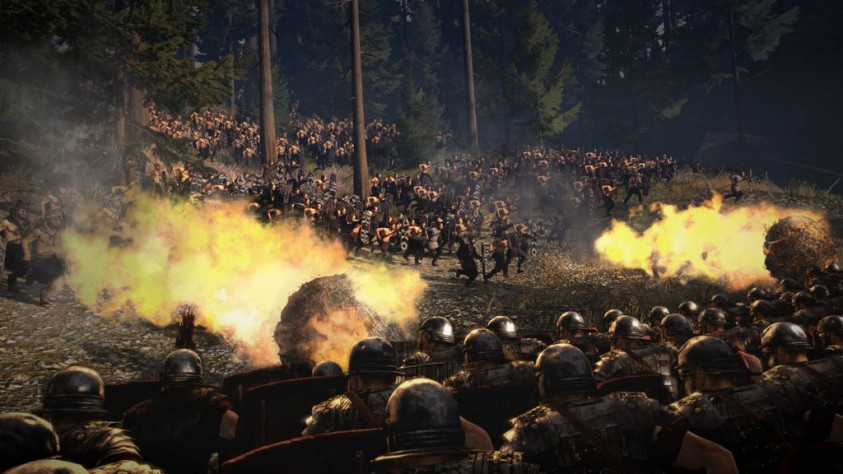
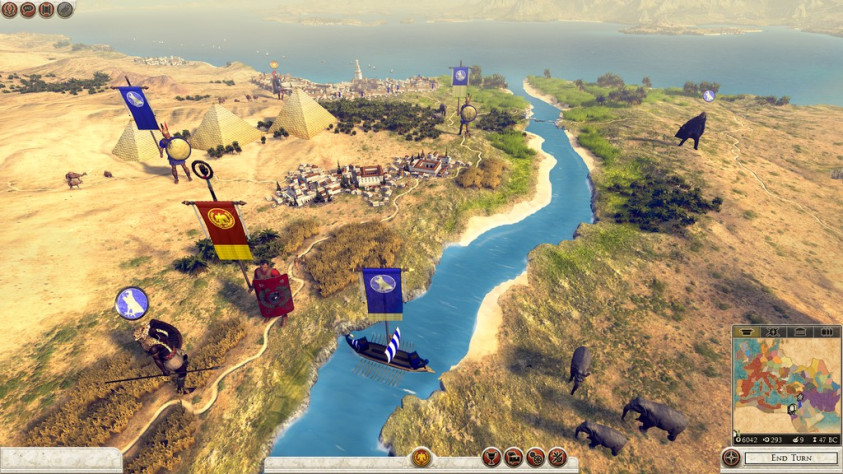
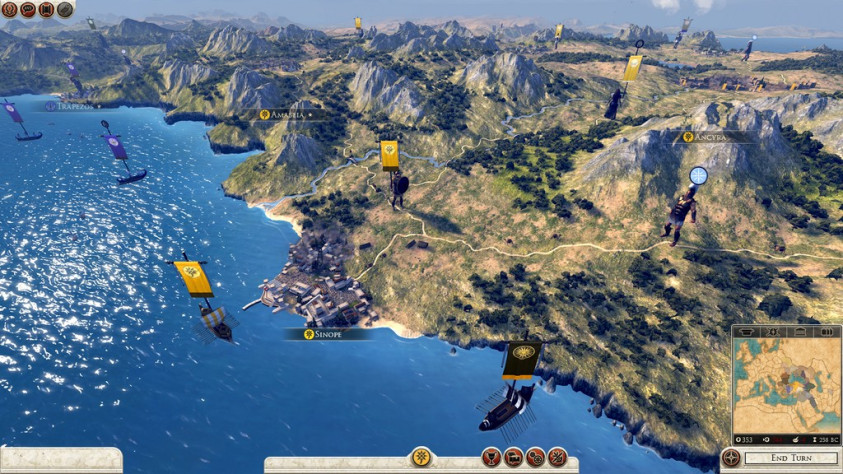

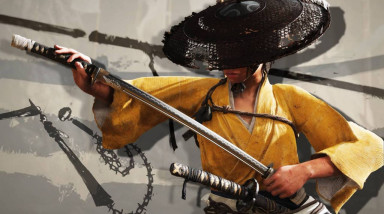
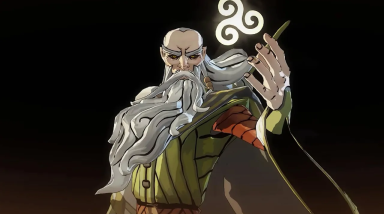
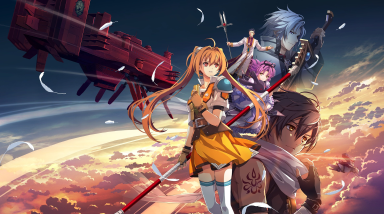

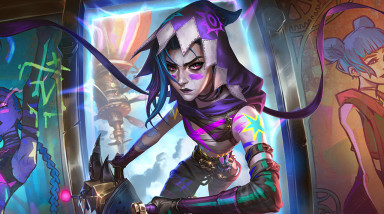

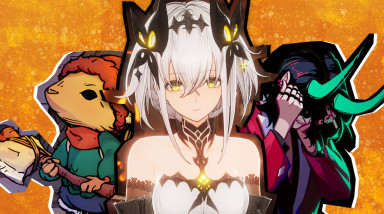

Лучшие комментарии
Эм… а на сколько подданной ее можно сделать?
P.S. никому случайно почка не нужна?